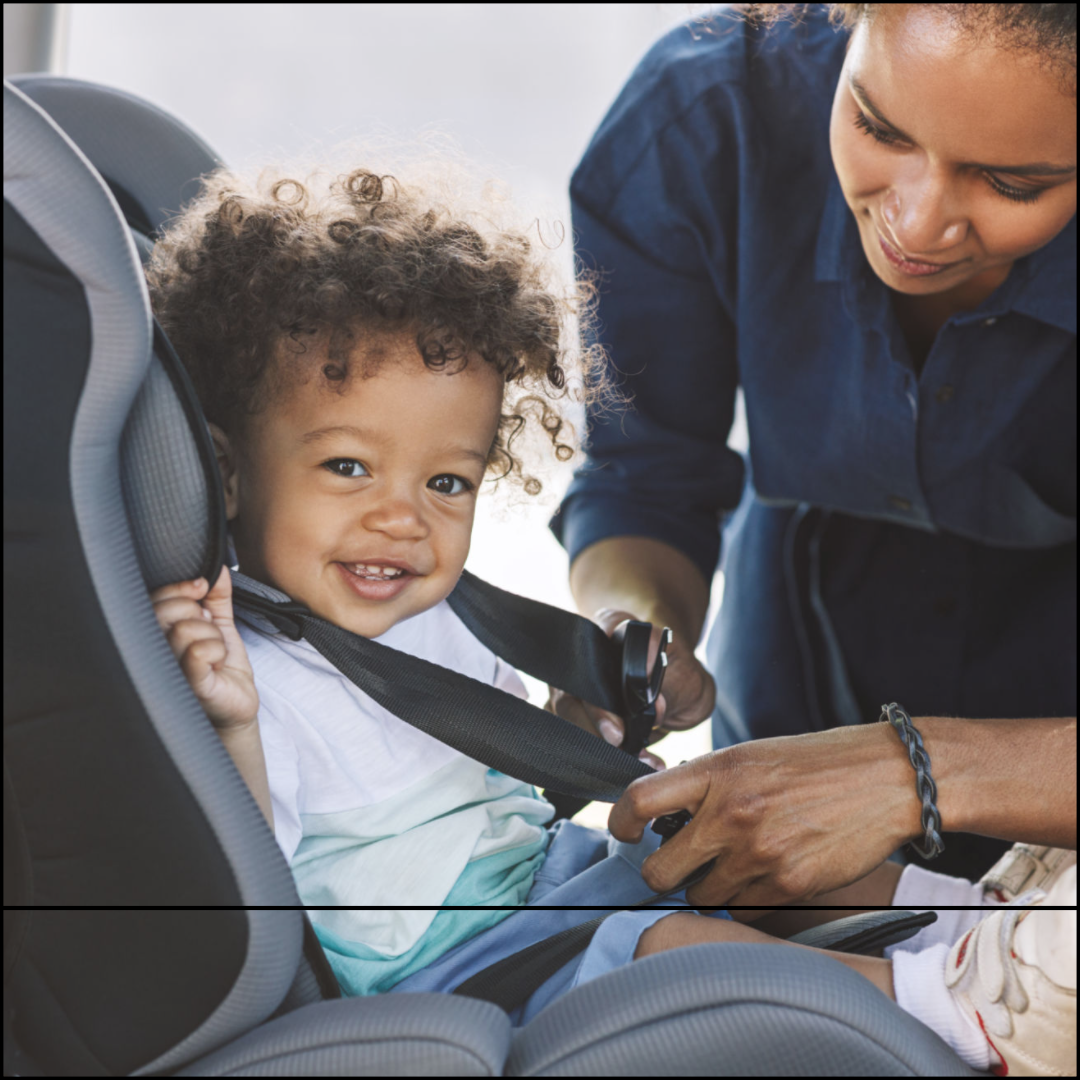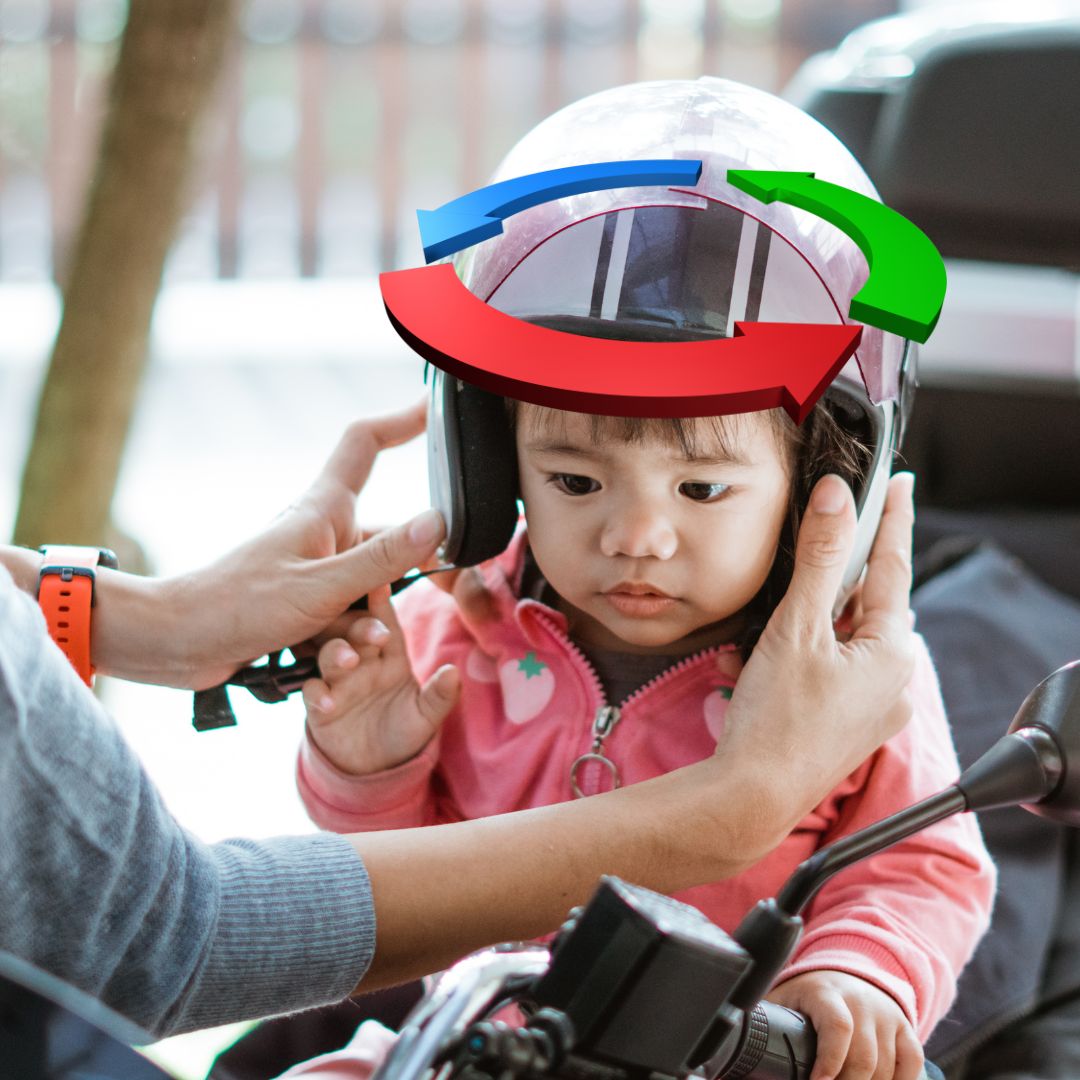Last updated: April 8, 2025
When it comes to protecting your child during car journeys, safety isn't just important—it's non-negotiable. Road accidents can happen in a split second, and being prepared could make all the difference.
If you're uncertain about how to keep your child secure, our detailed guide to choosing the best child car seat is a great place to start. 
But what if there was a way to dramatically improve the level of protection offered by your child’s car seat?
Enter the five-point safety harness: a proven, highly effective system that secures your child at five crucial points to minimise injury risk during a crash. This article breaks down why it’s such a game-changer and how to make sure your child is properly protected.
Still unsure why a 5-point harness is essential? Read more here.
What Is a Five-Point Safety Harness?
How It Works
This type of harness features five straps: two over the shoulders, two around the hips, and one between the legs (attached to the crotch). This configuration keeps your child firmly in place and spreads crash forces evenly across the body.
Why It Matters
The strongest parts of a child's body—the shoulders and hips—absorb the brunt of any crash impact. The five-point system ensures those areas are protected, reducing the chance of ejection and serious injury.
Why It’s Superior to a 3-Point Harness
Unlike 3-point harnesses, which only secure the upper torso, five-point harnesses hold the child in place more effectively, even in high-impact collisions. They also reduce sideways and forward movement, making them the gold standard in child seat safety.
Understanding Crash Forces
The Role of Restraints
Crash forces can be extreme. A five-point harness distributes those forces across the strongest parts of your child’s body, reducing strain on any one area.
Weight Limit Considerations
Be sure your car seat’s harness weight limit is appropriate for your child. If they exceed it, the harness may not perform as intended in a crash. Always consult the manufacturer’s guidelines.
Best Practices for Car Seat Position
Rearward-Facing Is Safest
Children under 15 months should always ride in rear-facing seats, which offer better support for the head, neck, and spine in a crash.
Correct Installation
Even the best car seat won’t be effective if it’s installed incorrectly. Learn the common installation mistakes to avoid here.
Testing and Certification
Crash and Rollover Testing
These tests mimic real-life crash scenarios and help manufacturers refine their designs for maximum safety.
Check for Certification Labels
Only use seats with an EU-approved label showing ‘E’ in a circle and ‘R129’. This ensures the product meets rigorous safety standards.
Considering a second-hand seat? Review what to look out for before making a decision.
UK Legal Requirements
- Children must use an appropriate car seat until age 12 or 135cm in height—whichever comes first.
- Only EU-approved seats are legal (look for the ‘E’ label and ‘R129’ rating).
- Rear-facing seats are mandatory for children under 15 months.
- Violations may result in a £500 fine.
When to Transition
- Stick with a five-point harness until your child exceeds the weight or height limit for that seat.
- Transition to a booster seat only when both the child’s height and weight surpass the harness limits.
- Booster seats are typically suitable for children weighing 40–100 lbs.
Special Needs Considerations
Some children may require adapted or specialised car seats. Learn more in our guide for parents of children with special needs.
Travel Tips for Parents
Whether you're taking a road trip or a short ride to school, travelling with a car seat comes with its own set of challenges. Explore our essential travel tips.
In Summary
The five-point safety harness is a critical advancement in child car seat design. It offers unmatched protection, spreading crash forces evenly and helping prevent serious injury. From understanding crash physics to staying compliant with UK law, arming yourself with knowledge ensures every car ride is as safe as possible.
FAQs
Why is a five-point safety harness safer than a 3-point harness?
It offers more contact points, distributing crash forces more evenly across your child’s body and reducing the risk of ejection.
What is the safest position for a car seat?
Rearward-facing in the back seat is the safest for young children.
What do crash and rollover tests evaluate?
These tests evaluate how a car seat performs during impact and overturning scenarios, ensuring it meets safety standards.
What’s the weight limit for a five-point harness?
Most 5-point harness car seats support children up to 18 kg (40 lbs). Always check your seat’s manual for exact specifications.
How does a booster seat differ from a 5-point harness?
A booster seat uses the vehicle’s seatbelt and is suitable for older children. A 5-point harness has its own restraint system, providing better support for younger children. Learn how to avoid common selection mistakes.
🚗 Prioritise Safety and Play
Car journeys can be both safe and fun. When your little one isn't in a car seat, they can still enjoy movement and adventure with our range of ride-on cars!





Share:
Why Your Child Needs a 5-Point Harness Car Seat in 2025
Where Was Bugatti Made and What is the History of Bugatti?